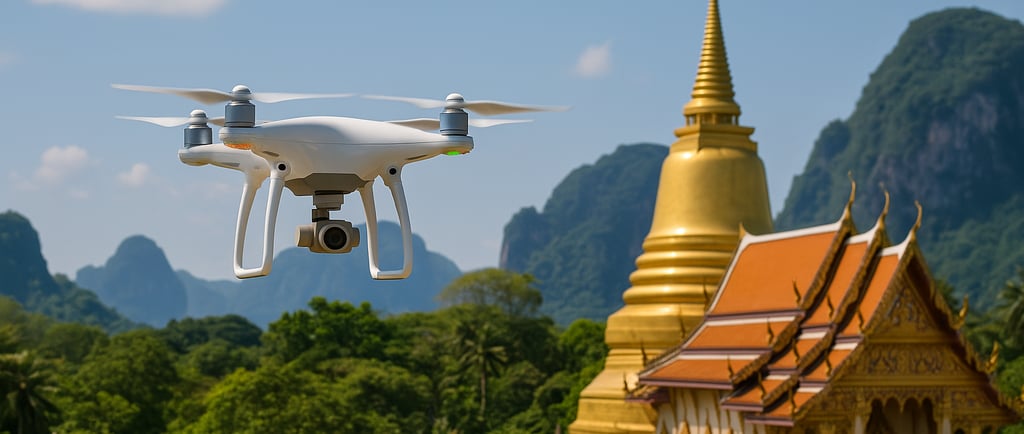Drone Laws in Thailand
6/25/20252 min read


1. General Legal Framework
Thailand has strict regulations governing the use of drones (officially termed Unmanned Aerial Vehicles or UAVs) to ensure safety, privacy, and airspace control. All drone operators, including tourists and residents, must comply with legal requirements to avoid penalties such as fines, equipment confiscation, or imprisonment.
2. Mandatory Registrations
To operate a drone legally in Thailand, two separate registrations are required:
NBTC (National Broadcasting and Telecommunications Commission)
Handles the ownership registration and approval for use of radio frequencies.
Registration website: https://anyregis.nbtc.go.th
CAAT (Civil Aviation Authority of Thailand)
Manages operator licensing and drone flight approval, including issuing pilot certificates.
Registration website: https://uasportal.caat.or.th
Important: Registering with only one agency is not sufficient. Both NBTC and CAAT registrations are compulsory.
3. Which Drones Need to Be Registered?
All drones, regardless of size or purpose, must be registered with the NBTC.
Additional CAAT registration is required for:
Drones with cameras or recording devices
Drones weighing more than 2 kg and up to 25 kg
Drones over 25 kg, which also need written approval from the Minister of Transport
4. Pre-Flight Requirements
Before flying a drone in Thailand:
CAAT Knowledge Test (available via the UAS Portal) should be completed to ensure understanding of airspace regulations. This test is not always mandatory but strongly encouraged.
Third-party liability insurance with coverage of at least 1 million THB is mandatory. Insurance can be purchased either in Thailand or abroad.
A Thai SIM card is needed to register through the CAAT portal (for OTP verification).
5. Operator Certification
To obtain a drone pilot certificate:
You must create an account on the CAAT UAS Portal and verify your identity.
An online exam must be passed (retake available after 24 hours if failed).
Once approved, the certificate is valid for 2 years.
A registration number will be issued and must be clearly displayed on the drone:
Minimum 3 mm font for drones under 25 kg
Minimum 25 mm font for drones over 25 kg
6. Key Update – June 30, 2025
CAAT will permanently discontinue its old drone registration portal: uav.caat.or.th
After June 30, all new and existing registrations must be completed or transferred to the new CAAT UAS Portal.
Users should download and securely store all certificates or documents from the old site before the shutdown.
7. Operational Rules for Flying Drones
The following rules must be followed when operating drones in Thailand:
Fly only in daylight hours and in clear weather
Maintain visual line of sight—use of FPV (first-person view) goggles alone is prohibited
Do not fly:
Near or over crowds
Within 9 km of any airport
Over government facilities, military zones, hospitals, or other restricted areas
No flying through clouds
Minimum distance from people/property:
30 meters for drones under 2 kg
50 meters for drones between 2 and 25 kg
Hazardous materials, including lasers, may not be carried
Special operations (e.g., night flying, altitudes above 90 m, entry into restricted areas) require written CAAT permission
Request via email: uas_u@caat.or.th
8. Incident Reporting
Any drone-related accidents or safety issues must be reported immediately to:
CAAT phone: +66 2 568 8851
Email: uav@caat.or.th